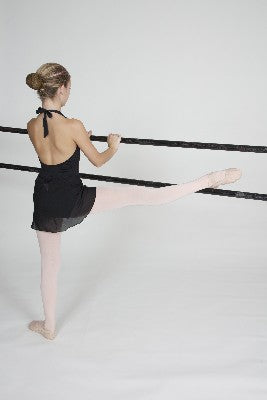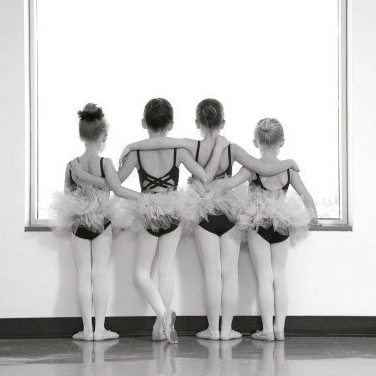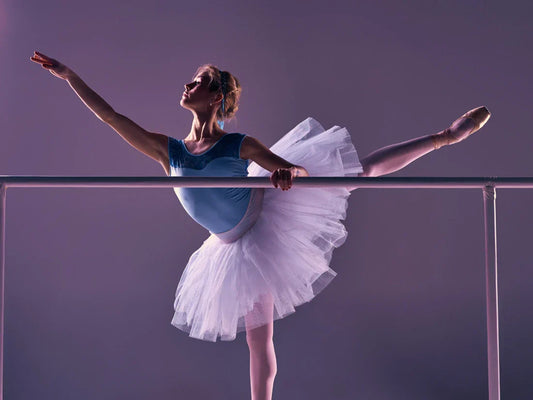Wall Mount or Freestanding?
Whether you are starting up a ballet academy, adding the Barre Workout to your fitness studio, or just looking for a way to practice your barre work or barre workout at home, you will inevitably have to make a choice regarding whether to go with a barre mounted onto the wall, or a freestanding portable barre. There are a lot of choices to be made in running a ballet studio, a fitness studio or home studio. Many of them will boil down to personal preference or will depend on your specific application, but when it comes to ballet barres, the answer is simple: freestanding. Freestanding is better by nearly every metric, for nearly every application.
Numbers Don't Lie
The first advantage that jumps out is the space advantage. Wall-mounted barres are, by definition, mounted to the wall. This means that for any given length of barre, only one side of it will be available for dancers, as the other will be occupied by wall space. The same length of freestanding barre, placed in the middle of the room, will provide space for dancers on both sides, doubling the number of dancers per linear foot of barre. This alone puts freestanding barres at a value advantage, as you would need to purchase 12 feet of wall-mounted barre to get the equivalent capacity to a 6-foot freestanding barre.
Beyond this, portable barres allow you to use the entire surface area of your studio for barre work, while wall-mounted barres limit you to the perimeter of the studio. In a 30' by 30' studio, this means that you would have 900 square feet of space for dancers to do their barre work, with barres that can be positioned and repositioned for all the dancers to see themselves in the mirrors. If each dancer gets 25 square feet of space, that still allows 36 dancers in the class. With wall mounted barres, if one 30' wall is taken up by mirrors, only the other 30' on the opposite wall will provide a good vantage for dancers to evaluate their technique in the mirror. If each dancer has 5 feet of barre space, that limits the class to 6 dancers. After that, the dancers have to start getting squished together, thereby limiting their effective range of motion.
Save Space and Money
Our freestanding, high-strength, structural steel Boss Ballet Barres are stronger, more cost-effective, space-saving, and portable. Please contact us to order one today!





